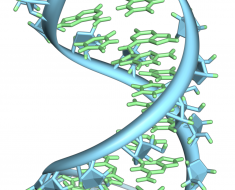To prevent and treat Alzheimer’s disease, scientists need to better understand how the disease differs between women and men, according to a paper published June 12 in Alzheimer’s & Dementia: The Journal of the Alzheimer’s Association.
Written by the Society for Women’s Health Research Interdisciplinary Network on Alzheimer’s Disease, the paper states that more research is needed into sex differences in Alzheimer’s disease to improve prevention, diagnosis, and treatment for both women and men.
“A growing body of research shows us that Alzheimer’s disease differs between women and men,” said Pauline M. Maki, Ph.D., chair of the SWHR Network on Alzheimer’s Disease and co-senior author on the paper. “To improve the diagnosis of the disease and to speed the development of new treatments and interventions, we must better understand how the biological and sociocultural differences between women and men are influencing the development, progression, and treatment of Alzheimer’s.”
About 5.7 million Americans are currently living with Alzheimer’s disease, two-thirds of whom are women. In the U.S., Alzheimer’s is the fifth leading cause of death for women and the eighth leading cause of death for men. Alzheimer’s and other dementias will cost the U.S. an estimated $277 billion this year, and on its current trajectory, the annual costs could rise to more than $1.1 trillion dollars by 2050.
While progress has been made in Alzheimer’s research, little attention has been given to the differences between women and men, resulting in a lack of knowledge and awareness about this topic in the research community and in the public, the researchers note.
Biological sex plays a role in Alzheimer’s disease risk. For example, some risk factors have a stronger effect in one sex. The most common genetic risk factor for Alzheimer’s is APOE ε4, but women with APOE ε4 are at greater risk for developing Alzheimer’s than men with APOE ε4.
Presentation and progression of Alzheimer’s also differs between the sexes. After receiving a diagnosis of dementia, women decline faster than men. Women are also more likely to show outward signs of dementia than men who have the same amount of Alzheimer’s pathology, such as plaques and tangles in the brain. But we do not yet understand why.
To promote future research, the paper identifies gaps in knowledge like these and makes recommendations on high-priority areas.
These priority research areas include:
- Potential risk factors that affect only one sex, like menopause and pregnancy disorders, and the influence of sex hormones like estrogen on brain function
- Differences between women and men in risk factors that affect both sexes, like cardiovascular disease, diabetes, exercise, and depression
- Sex differences in genetic risk factors like APOE ε4
- Sex and gender differences in racial and ethnic subgroups
- Gender differences in caregiving and how the burden of caregiving influences Alzheimer’s risk for the caregiver
- Differences between women and men in response to current Alzheimer’s therapeutics and those in development
- Differences between women and men in the detection, diagnosis, progression, management, and treatment of Alzheimer’s
Source: Read Full Article





